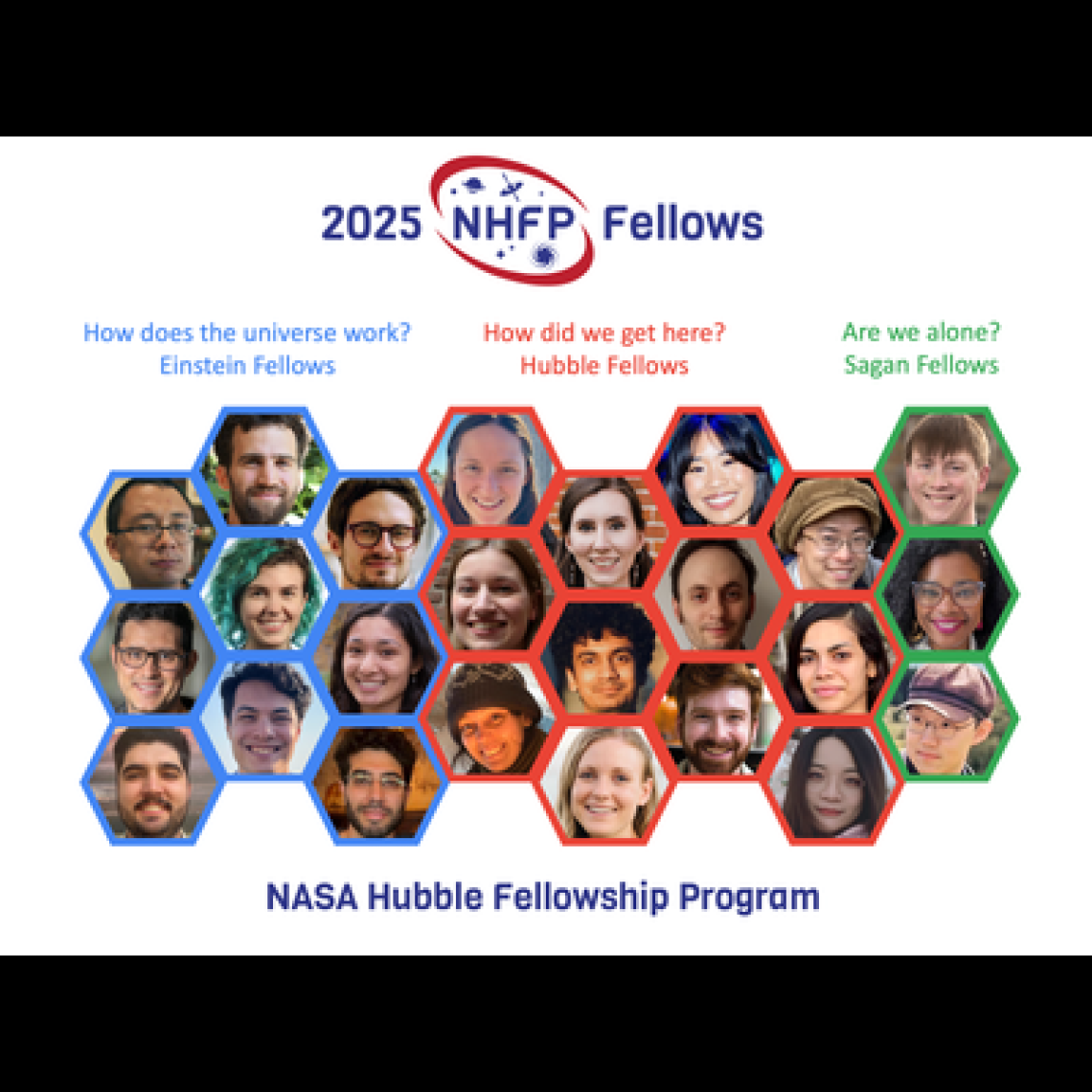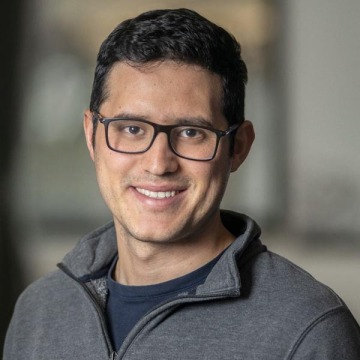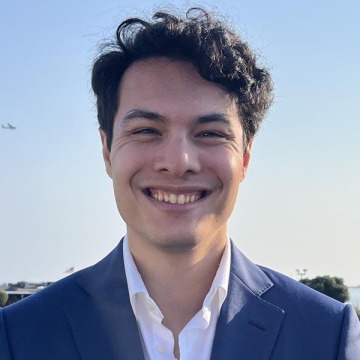Two Steward Observatory alumni receive highly competitive Einstein Fellowships

Steward Observatory alumni Juan Nico Garavito Camargo and Massimo Pascale (both pictured in blue hexagons in the image above) have been named 2025 Einstein Fellows. The NHFP enables outstanding postdoctoral scientists to pursue independent research in any area of NASA Astrophysics, using theory, observations, simulations, experimentation, or instrument development.
NHFP
The highly competitive NASA Hubble Fellowship Program (NHFP) recently named 24 new fellows to its 2025 class, including two former Steward Observatory students: Juan Nico Garavito Camargo, who earned his Ph.D. in 2021 with Dr. Gurtina Besla as his thesis advisor; and Massimo Pascale, who earned his B.S. from the Department of Astronomy in 2019.
The NHFP fosters excellence and leadership in astrophysics by supporting exceptionally promising and innovative early-career astrophysicists. Over 650 applicants vied for the 2025 fellowships. Each fellowship provides the awardee up to three years of support at a U.S. institution.
Once selected, fellows are named to one of three sub-categories corresponding to three broad scientific questions that NASA seeks to answer about the universe:
How does the universe work? – Einstein Fellows
How did we get here? – Hubble Fellows
Are we alone? – Sagan Fellows
"The 2025 class of the NASA Hubble Fellowship Program is comprised of outstanding NASA Astrophysics researchers," said Shawn Domagal-Goldman, acting director of the Astrophysics Division at NASA Headquarters in Washington. "This class of competitively-selected fellows will inspire future generations through the products of their research, and by sharing the results of that work with the public. Their efforts will help NASA continue its worldwide leadership in space-based astrophysics research."
An important part of the NHFP is the annual Symposium, which allows Fellows the opportunity to present results of their research, and to meet each other and the scientific and administrative staff who manage the program. The 2024 symposium was held at the NASA Exoplanet Science Institute (NExScI) in Pasadena, California. Science topics ranged through exoplanets, gravitational waves, fast radio bursts, cosmology and more. Non-science sessions included discussions about career paths and developing mentorship skills, as well as an open mic highlighting an array of talents other than astrophysics.
The Space Telescope Science Institute in Baltimore, Maryland, administers the NHFP on behalf of NASA, in collaboration with the Chandra X-ray Center at the Smithsonian Astrophysical Observatory in Cambridge, Massachusetts, and the NASA Exoplanet Science Institute and the Jet Propulsion Laboratory, in Pasadena, California.
Short bios and photos of the 2025 NHFP Fellows can be found at:
https://www.stsci.edu/stsci-research/fellowships/nasa-hubble-fellowship-program/2025-nhfp-fellows
More about our Steward Observatory alumni:
Nico Garavito is interested in understanding the ongoing interactions between galaxies in the Local Group and what these interactions can reveal about dark matter.

Nicolas Garavito Camargo
During his PhD, Nico worked with Professor Gurtina Besla at the University of Arizona, simulating and predicting how the Milky Way’s dark matter halo is being deformed by the passage of its largest satellite galaxy, the Large Magellanic Cloud (LMC). These deformations have now been detected, thanks to the precise proper motions provided by the Gaia satellite.
As a postdoctoral fellow at the Center for Computational Astrophysics (CCA) at the Flatiron Institute in New York, Nico studied the consequences of the ongoing interaction between the Milky Way (MW) and the LMC. Using both constrained and cosmological simulations, he examined several effects of this interaction, including its impact on the orbits of other satellite galaxies, the stars in the stellar halo, stellar streams, dark matter subhalos, and the detection of dark matter in direct detection experiments.
Before joining the University of Maryland, Nico will work with Professor Kate Daniel at the University of Arizona. As an Einstein Fellow at the University of Maryland, he will collaborate with Professor Benedikt Diemer to study the response of dark matter halos in different dark matter models.
Nico completed his bachelor's degree in physics at the Universidad Nacional de Colombia in Bogotá and earned a master's degree in physics from Universidad de los Andes, also in Bogotá.
Massimo Pascale grew up in Phoenix, Arizona, and completed his bachelor’s in astronomy, physics, and math at the University of Arizona. His doctoral work was supported by a National Science Foundation (NSF) graduate research fellowship, and will complete his PhD in summer 2025 at University of California, Berkeley under the supervision of Professor Liang Dai.

Massimo Pascale
Massimo’s research focuses on the versatile applications of strong gravitational lensing. His dissertation characterized extreme super star clusters seen in high-redshift lensed galaxies, and provided novel evidence for the chemical evolution of their nebulae. By connecting these distant clusters to those observed in the local universe, his work gave new insights into the puzzling origin of globular clusters. In addition to his work on star clusters, Massimo also pioneered new methods for measuring the Hubble constant from strongly lensed supernovae, leading the first such measurement from a Type Ia supernova.
As an Einstein Fellow, Massimo aims to crack the long-standing problem of multiple populations in globular clusters. Leveraging deep James Webb Space Telescope (JWST) imaging and spectra of cosmic noon star clusters, he will confirm the birth of globular clusters in action and establish a clearer understanding of their formation and evolution. Simultaneous to this work, Massimo will reevaluate the existing sample of lensed supernovae to extract a new precision measurement of the Hubble constant, providing a comprehensive framework for this budding approach to measuring the Hubble constant.

